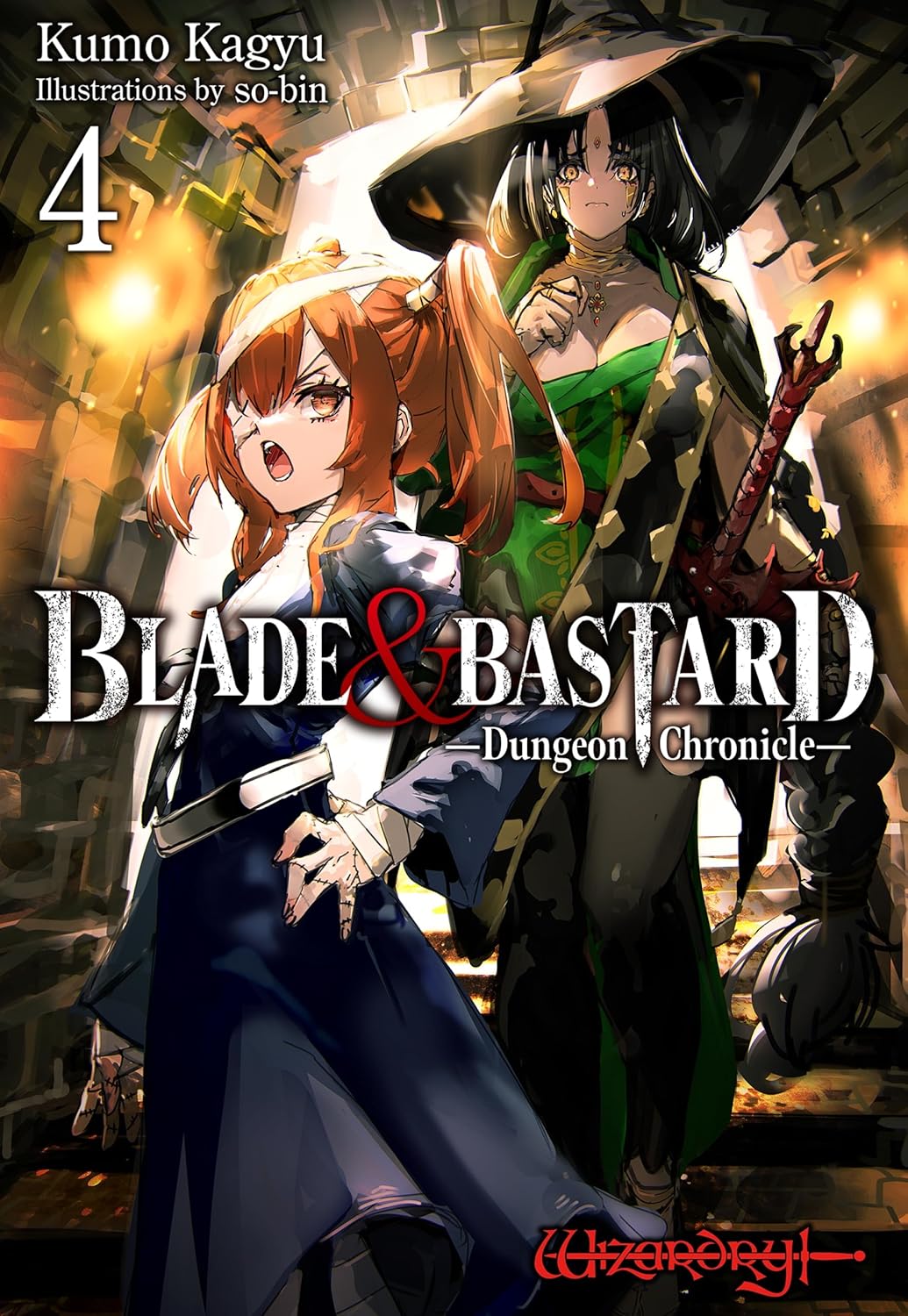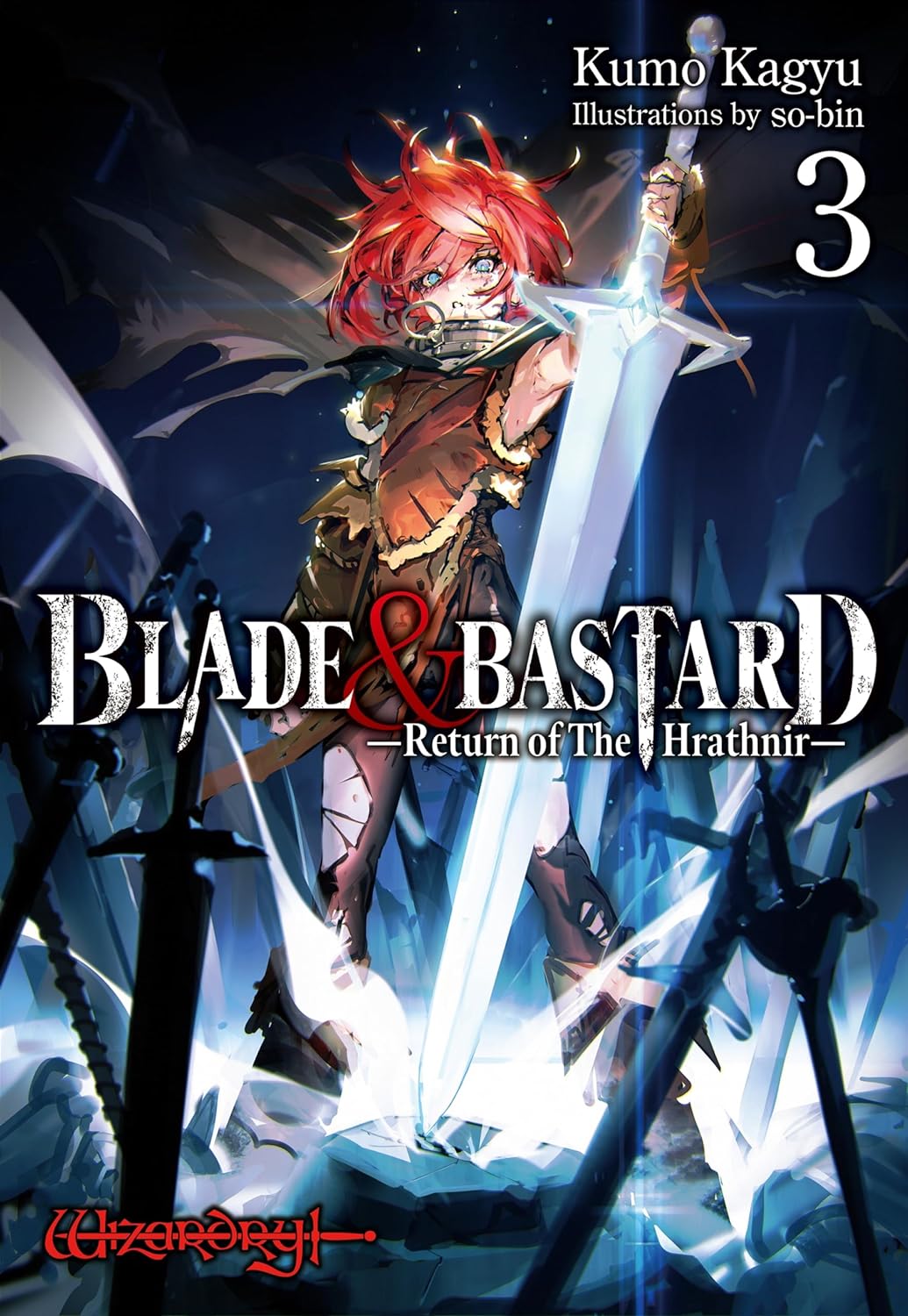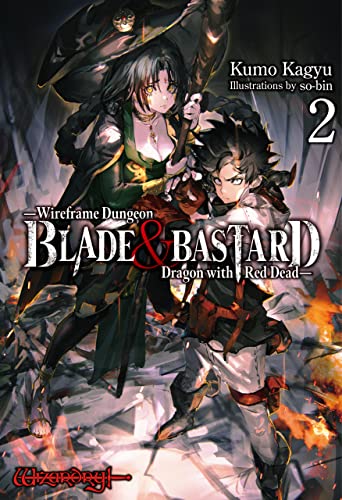By Kumo Kagyu and so-bin. Released in Japan as “Blade & Bastard” by Dre Novels. Released in North America by J-Novel Club. Translated by Sean McCann.
This was better than the last volume, possibly as it’s a short story collection disguised as a novel. The stories are vaguely interconnected, except for the first one, and are all related to the aftermath of the third book. Iarumas is in deep thought, so is not going into the dungeons, leading the rest of the cast to try to go in without him. They’re helped by some eccentric new cast members, of course, who may or may not stick around. (I’m sure the twins will, not so sure about the chuuni.) And of course, in case you’d forgotten, Aine is not doing anything at all in this book, as she lost both her arms in the last volume. That said, this turns out to be what Iarumas is in deep thought about, so hopefully we can do something about it. Mostly, though, this is a book that allows Orlaya to step up and show that she’s likely to be the second protagonist going forward.
As I said, this starts off looking like a short story collection, as we get a flashback showing how the All-Stars got together and what Sezmar was like when he first got to the city. After that, we follow Schumacher with a party of his own, including twins who “came back wrong” after resurrection and a ninja thief who seems to be really into her role but rapidly finds the dungeon is not a place where she can pretend to be Megumin. We then get a short comedic chapter from the POV of Garbage’s new sword, which is the funniest chapter in the book. Then Iarumas goes hunting in the dungeon for something, but doesn’t quite find it. The last two chapters are interconnected, as the main team, minus Iarumas and Aine but plus the twins (now slightly less wrong) and the ninja go hunting and find a pool with a rubber duck… which may be exactly what Iarumas wants.
As always, the new characters are a) interesting, and b) the author’s barely disguised fetish. In this case it is twins, Rahm-and-Sahm, who are now half and half each other thanks to a botched resurrection. They’re weird and stoic. Then, later in the book, they get a lot more vibrant… and a lot more annoying, having apparently come to terms with basically being each other and deciding they’re OK with it. The other new character is Shadowwind, who as I said sounded like a Crimson Demon when she first arrived, but the dangers of the dungeon shut her up fairly quickly, and by the end of the book she’s gored in the throat (which she survives) and blown up by an exploding trap (which she does not). She’ll be resurrected, but I’m not sure we’ll see her again. She’s just not as… interesting as twins who are each wearing the other half of their twin. And again, by “interesting” I mean “the author’s basely disguised fetish”.
The regulars do all get a lot to do, and Orlaya in particular shows off her skills as more than just “another love interest for Raraja”, so rest assured. And yeah, sorry to spoil, but Aine gets her arms back. I could see the author trying to decide between “battle-crazed nun with a sword” and “amputee nun” for hours before making the decision, and fortunately they made the right one. Next time, royal intrigue? More of Princess Garbage? We shall see.


